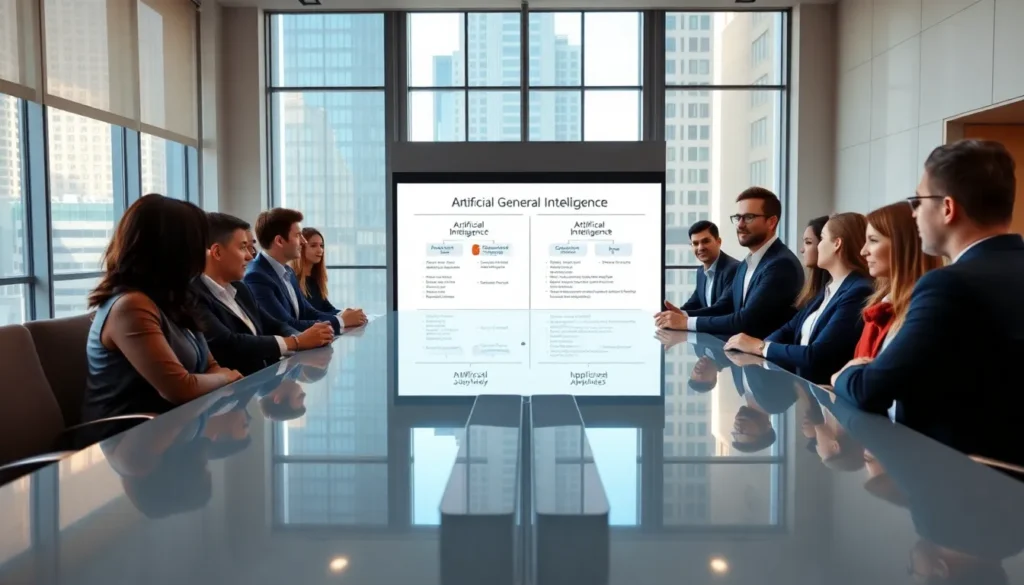Table of Contents
ToggleIn an age where artificial intelligence is no longer a thing of science fiction but a daily reality, the importance of testing these smart systems has never been more critical. Ever watch a robotic vacuum get stuck on a carpet while confidently claiming to be a cutting-edge AI? Sometimes, it feels like they could use a little more training, or perhaps a discerning quality check. Testing artificial intelligence is not just about catching bugs: it’s about ensuring that these systems perform as intended, delivering reliability and accuracy. Immerse as we unravel why testing matters and how it shapes the future of technology.
Importance Of Testing In AI Development

Testing is the backbone of artificial intelligence development. Just like one wouldn’t jump into a car without first checking the brakes, developers must ensure that AI systems are well-tested before deployment. Testing safeguards against errors that could lead to unintended consequences or, worse, disasters.
The stakes are particularly high in sectors like healthcare and autonomous vehicles where AI systems play critical roles. A misstep in algorithms can result in misdiagnoses or accidents, making rigorous testing not just beneficial but essential. Well-structured testing ensures that AI performs tasks accurately and improves its learning capabilities over time.
Types Of AI Testing Methods
In the realm of AI testing, several methods come into play, each with its unique advantages and applications. Here’s a breakdown of some of the primary testing methods:
1. Unit Testing
This is the most basic form of testing, ensuring that individual components of the AI system function correctly. Developers write tests for each unit of code, verifying that it meets specified requirements.
2. Integration Testing
This type examines the interactions between different units or components. As AI systems often rely on multiple layers of data processing, effective integration testing ensures that all parts work harmoniously together.
3. Regression Testing
Done every time the code changes, regression testing checks that updates haven’t introduced new errors or affected existing functionality. This is particularly critical in AI, where minor changes can lead to unexpected results.
4. User Acceptance Testing (UAT)
Before a system goes live, it’s essential to have real users test it. UAT provides insights into how end-users will interact with the AI and whether it meets their needs and expectations.
5. Performance Testing
This involves testing the AI’s efficiency under various conditions, including load and stress. After all, nobody wants an AI that freezes when handling lots of data.
Challenges In AI Testing
Even though its necessity, AI testing isn’t without its hurdles. Here are some key challenges that professionals face in this burgeoning field:
1. Complexity of AI Models
AI systems can be incredibly complex, often resembling black boxes that make it difficult to understand how decisions are made. This complexity complicates the testing process, making it hard to identify specific failure points.
2. Dynamic Nature of AI Systems
With machine learning at their core, AI systems evolve over time. Their ability to learn from new data can introduce variability and unpredictability, making consistent testing challenging. Developers are constantly chasing their tails trying to keep up.
3. Data Quality
The performance of AI models heavily relies on the quality of input data. Inconsistent, biased, or incorrect data can lead to unreliable outcomes, which poses a significant challenge during testing.
4. Resource Intensive
Comprehensive AI testing requires substantial time and resources. Organizations often struggle to allocate adequate personnel, tools, and frameworks to carry out thorough testing efficiently.
Best Practices For Effective AI Testing
For successful AI testing, several best practices can be adopted to streamline the process and enhance reliability:
1. Establish Clear Objectives
Before diving into testing, it’s critical to define the objectives clearly. Understanding what success looks like can guide the testing process effectively.
2. Use Diverse Testing Methods
Relying on a single testing method may not suffice. Combining various methods allows for a more comprehensive evaluation of AI systems, addressing different aspects of performance and reliability.
3. Automate Where Possible
Leveraging automation in testing can save time and reduce human error. While certain tests may require human oversight, many can be automated, making the process more efficient.
4. Incorporate Real-World Scenarios
Testing should mimic real-world scenarios as closely as possible. This provides insights into how AI systems will perform in actual use cases, identifying potential pitfalls before they arise.
5. Continuously Monitor and Update
AI testing doesn’t end when the system goes live. Continuous monitoring and regular updates to testing methodologies are crucial as new data and scenarios emerge.
Future Trends In AI Testing
As artificial intelligence continues its rapid evolution, the landscape of testing is transforming as well. Here are a few trends to watch:
1. AI-Driven Testing Tools
With the rise of AI itself, testing tools powered by AI are becoming increasingly prevalent. These tools can identify patterns, predict potential failures, and even suggest fixes, enhancing the efficiency of the testing process.
2. Greater Focus on Ethics and Bias
As ethical considerations become more central in AI discussions, testing for bias and fairness will become crucial. Future testing methodologies will likely integrate frameworks that address these societal implications more directly.
3. Collaboration and Open-Source Testing Frameworks
The future may also see a shift towards collective efforts in developing testing frameworks. Open-source tools can foster innovation and collaboration, leading to more effective and adaptable testing solutions.







